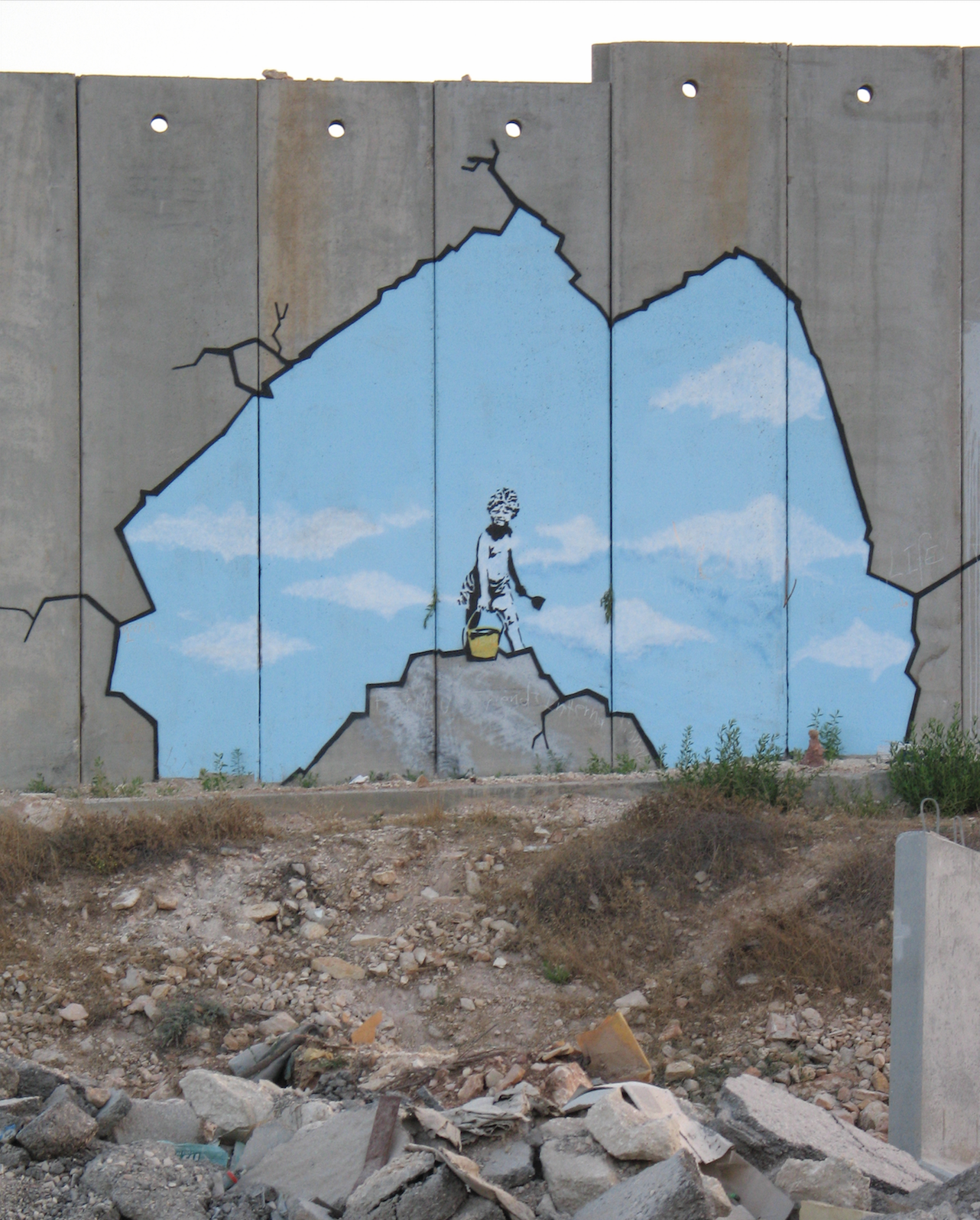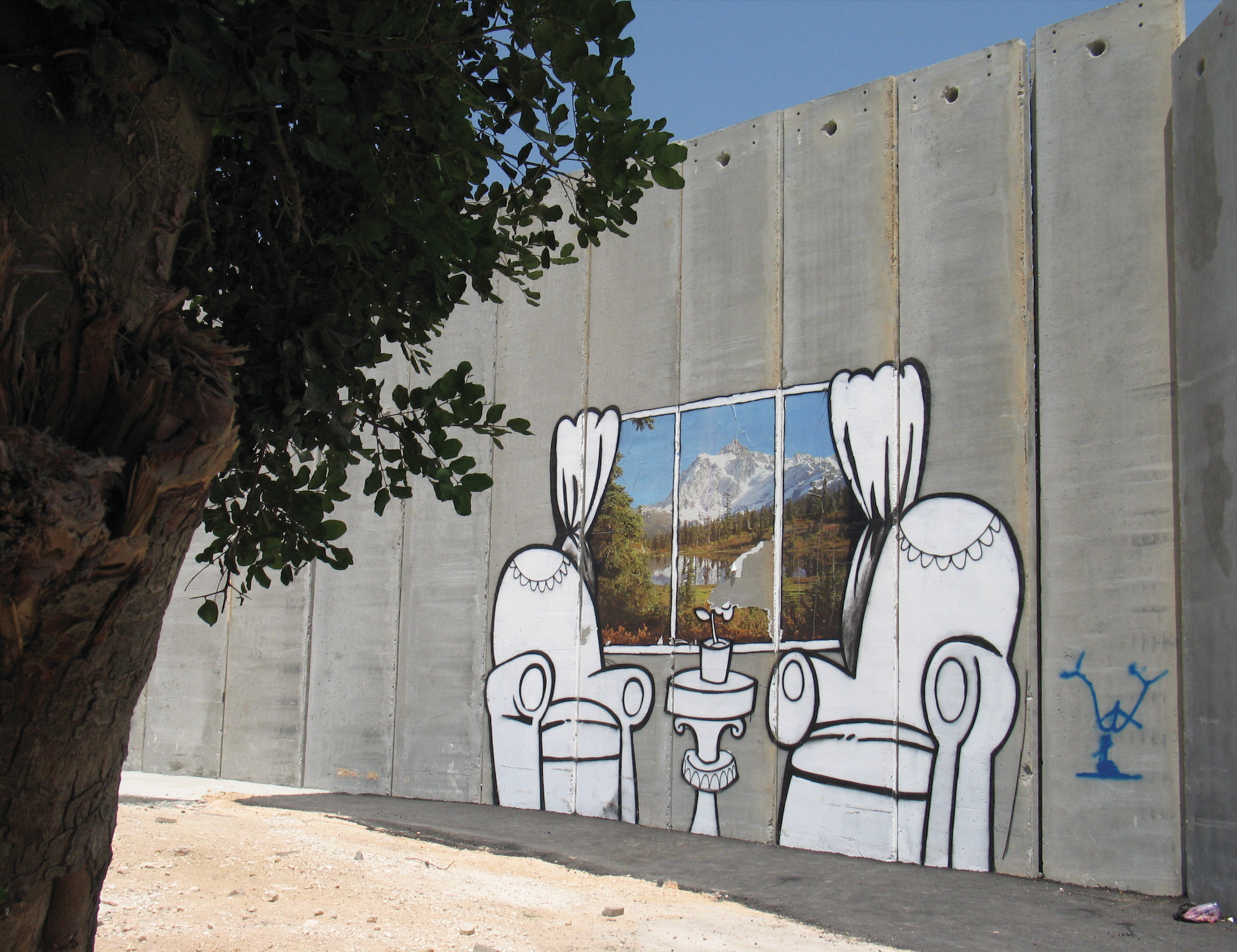FEATURE: BOMBING THE WORLD WITH BANKSY
BOMBING THE WORLD WITH BANKSY
Traveling around the globe and leaving behind a trail of thought-provoking images, Banksy is without a doubt the world’s most famous graffiti artist. Having worked the streets for years, Banksy has also produced works on canvas worth hundreds of thousands of dollars in the fanciest of galleries. And yet, apart from a small circle of close friends, no one knows who Banksy really is.
“Graffiti has been used to start revolutions, stop wars, and generally is the voice of people who aren’t listened to, even if you don’t come up with a picture to cure world poverty, you can somebody smile while they’re having a piss.”
Banksy comes and goes like a thief in the night, a modern-day Zorro who uses spray paint and stencils to leave his mark. He likes to think of himself as a rat, mankind’s most hated, yet ever-present animal companion, which thrives in the underbelly of society. Banksy, however, is not just any rat. He is a rat with wits, not interested in food or leftovers, but in holding up a metaphorical mirror when you least expect it.
He is also a rat with guts. Being a graffiti artist, Banksy has been forever on the run from overzealous policemen, and still is, as the British establishment continues to perceive his work as mere vandalism. Images of two policemen kissing tenderly, Queen Elisabeth as a chimpanzee and Churchill with a mohawk just do not go down well in the public domain. Also controversial is his image of Phan The Kim Phúc, the Vietnamese World Press Photo girl who survived a U.S. napalm attack in 1972. Banksy portrayed her running hand in hand with two all-American icons, Mickey Mouse and Ronald McDonald.
Banksy’s notoriety rose to a new level when, in 2005, he visited the separation wall between Israel and the West Bank. The Israeli Defense Forces were not quite your average British Bobby.
“What the f*** are you doing?” one Israeli officer shouted when he saw Banksy spray paint the concrete wall. Bansky simply replied, “Sorry, but you will have to wait until it is finished.” ”Safety off!” the officer commanded his soldiers and the next thing Banksy saw was a cloud of bullets flying over his head. Even that did not stop him from completing a total of some nine images. The artist, who is often helped by two or more partners in crime, must have managed to convince the soldiers that shooting him would be very bad PR for the Zionist state. Spanish photographer Fernando arrived on the scene shortly after “the rat” had left and supplied us with the images shown here… a girl floating over the wall with the help of balloons, a simple ladder, an imaginary hole showing a tropical beach.
On his website, Banksy explains the reasons behind traveling to Palestine. With his characteristic mix of reason and hard-hitting irony, he writes that the wall “essentially turns Palestine into the world’s largest open prison,” while it is “the ultimate holiday destination for graffiti writers.”
Banksy Who?
Over the years, numerous magazines and newspapers have attempted to unmask the great unknown guerilla artist, but with little success. One fact they have been able to put their hands on is that Banksy was born in the early 1970s near Britain’s alternative capital Bristol.
“When I was about ten years old, a kid called 3D was painting the streets hard,” Bansky said in one of the few interviews he has ever given. “I think he’d been to New York and was the first to bring spray painting back to Bristol. Graffiti was the thing we all loved. We did it on the bus on the way home from school. Everyone was doing it.” Graffiti was first introduced in Great Britain by the American hip-hop band, Rock Steady Crew that was accompanied by several spray paint artists. The latter proved a major influence on 3D, who went on to form the band Massive Attack.
Having started as a free-hand graffiti artist, Banksy reportedly discovered the art of stenciling thanks to yet another police raid. Hiding under a truck, Banksy saw a stenciled serial number on the vehicle’s plate and thought, “Why not do the same, but bigger?” And so he did.
One British newspaper recently investigated a photograph allegedly showing Banksy at work in Jamaica. It published a name Robin G. and tracked down Robin’s parents. Robin, however, categorically denied having any links to the artist. “I have no interest in ever coming out,” Banksy once said. “I figure there are enough self-opinionated assholes trying to get their ugly little faces in front of you as it is.” As we could not agree more, and love a little mystery, we will just leave it at that. Let Banksy’s work speak for itself.
Banksy in Lebanon?
Under the bridge between Downtown Beirut and Achrafieh, you will find the image of a worker in a Sukleen outfit sweeping bullets with a broom. The image, realistic yet with an ironic twist, bears all the trademarks of Banksy, including his eye for location. Spanish photographer Fernando believed it could be the real Banksy. Christine Tohme, director of Ashkal al Alwan, the Lebanese association for Plastic Arts and a fan of Banksy, agreed it could be. Yet, as far as she knows, Banksy never been to Lebanon. If that is true, the image of the worker with a broom is a true Banksy-like work.
A second Banksy work may have been inspired by the 2006 war in Lebanon. It shows a child with a teddy bear standing amidst the rubble, as a reporter holds back aid workers to get a better picture. While the image may have been inspired by the mayhem of postwar-Lebanon, it is unlikely that it was produced in Lebanon.
If you want to know more about Banksy, visit his website www.banksy. com or buy one of his books, Existencilism, Banging Your Head Against a Brick Wall, Cut It Out or Wall and Piece.
TEXT BY PETER SPEETJENS


